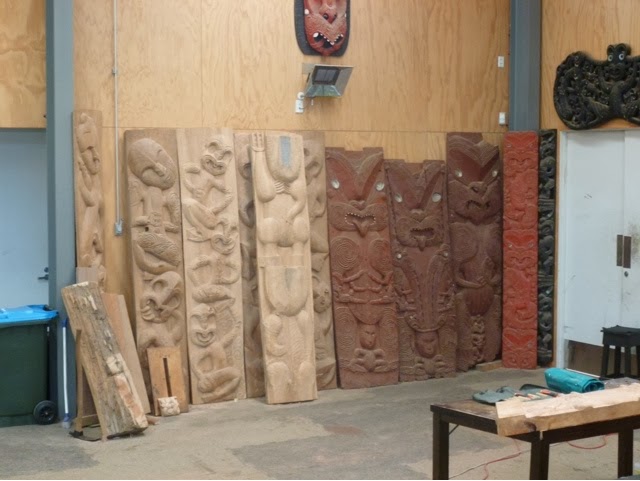A worker at the advice counter advised me to go to Whakarewarewa (the living Maori village) to see the geothermal sights but to also see how the Maori have adapted to living with the geothermal sources that are spread beneath them.
I caught a bus to Whakarewarewa and joined a guided tour of the village. It took about 2 and a half hours, it also included a cultural performance.
The guide showed us all of the geothermal pools throughout the village, used to steam vegetables and dip in birds and boar so as to make the skinning and plucking easier. We were also shown the meeting houses and the centre of the village.
The Maori performers then did several songs and dances on the stage at the towns theatre. Afterwards I did my own little hike around the volcanic valley and saw hot lakes and other geothermal sights.
I was then advised to go to Te Puia as it had much better access to geysers, mud pools and the kiwi santuary.
I again joined a guided tour and was taken to two of the most respected teaching institutions in Maori society, the Carving school and the flax weaving school.
It may sound dull to someone who hasn't been there but it is incredible how the Maori have revived and are still reviving their traditional crafts. When the influenza outbreak in the early 1900's decreased the Maori population to dangerous levels these well respected and amazings carving and flax weaving skills were almost lost.
However the Maori then set up the carving school in rotorua along with the flax weaving school in order to spread knowledge and develop these skills in young people.
The guide then took me to the meeting house and we went in to observe the traditional Maori patterns and architecture.
The Kiwi sanctuary was about a 2 minute walk away, unfortunately you can't take pictures even with the flash off as the kiwi are nocturnal birds and a lot of things can disturb them. We were told that it was essential that the breeding pair would not be disturbed as they had to be in a comfortable environment to mate. Kiwis are now an endangered species and have decreased in population from 12 million before humans arrived to just 70000 now.
We arrived at the geysers just in time for their daily eruptions.













No comments:
Post a Comment